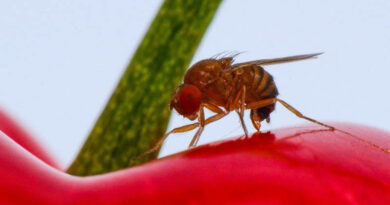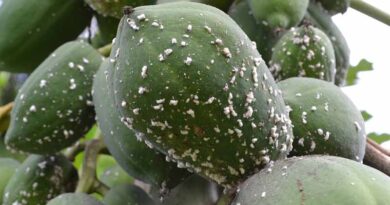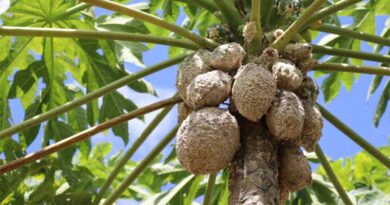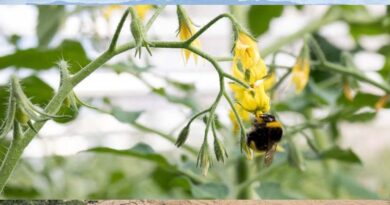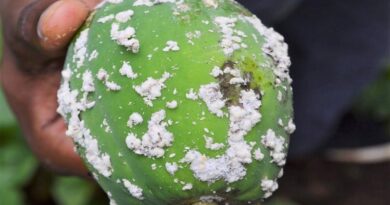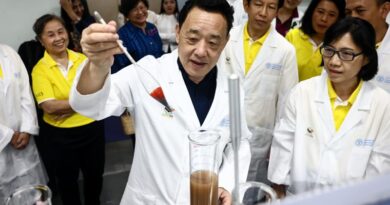CABI helps step up the fight to find suitable biocontrol for the Comstock mealybug
09 July 2021, UK: CABI scientist Dr Lukas Seehausen has joined colleagues from Agroscope, Andermatt Biocontrol and the Office of Arboriculture of the Canton Valais to step up the fight against the Comstock mealybug (Pseudococcus comstocki) with augmentative releases of a parasitic wasp.
Twenty thousand parasitic wasps (Acerophagus malinus) were released in two plots of fruit trees – one apple and one apricot – in the municipality of Saxon, the Swiss Canton of Valais, as part of a project funded by the Swiss Federal Office for Agriculture (FOAG).
It is hoped that the release of the parasitic wasp – in sections of 1,000 m2 in each of these plots – will lead to it increasing the existing population and as such enhance the effectiveness of it as an antagonist and an environmentally friendly and sustainable control of the Comstock mealybug.
Originating from Asia, the Comstock mealybug was first detected in 2016 in fruit crops of the Swiss Canton of Valais. Following its detection, the mealybug has caused significant local economic damage to apricot, pear and apple production, especially during 2018 and 2019.
The damage of the Comstock mealybug in orchards is mainly indirect due to an abundant secretion of honeydew which promotes the development of sooty mold that depreciates the fruits and weakens the tree. Additionally, the mealybug hides in fruits, for example in the calyx of apples, which are therefore not marketable as table fruits.
Also Read: Kharif 2021 sowing update: 499 lakh hectares sown till date
Chemical control, with currently authorized products, has so far produced insufficient results. Integrative pest management including biological control methods will be necessary to fight this new invader.
A release container with the parasitic wasp Acerophagus malinus is placed near an apricot to entice the Comstock mealybug (Credit: L. Seehausen, CABI).
Dr Seehausen said, “The objective of this part of the project is to increase the abundance of A. malinus and its ability to disperse and attack the Comstock mealybug – thereby affecting the pest’s prospects of reproducing.
“After five to seven days from release we will collect mealybugs and assess in the laboratory if they are parasitized or not. By comparing the parasitism rate with the one in nearby areas without releases, we should have a good idea of the wasps’ ability to control the mealybug.”
Acerophagus malinus has already been successfully introduced as a biological control agent against the Comstock mealybug in orchards in the USA and in 2010, the wasp was also found to be already present in Turkey and southern France.
Dr Lukas Seehausen (left) joins colleagues from Agroscope, Andermatt Biocontrol, the Office of Arboriculture of the Canton Valais and local fruit producers in the fight against the Comstock mealybug (Credit: L. Seehausen, CABI).
Dr Seehausen added, “Results of our project indicate that insecticides alone – being biological or synthetic – are not enough to control this mealybug. We therefore hope that augmentative releases of this parasitoid as a biological control agent or an Integrated Pest Management approach which combines both biological control with authorized chemical products will help reduce the damage to an economically bearable level.”
He said that other elements of the project will involve the development of efficient rearing techniques of A. malinus – as well as experiments with biopesticides and sanitation of field equipment to avoid spreading the Comstock mealybug any further.


